Goalkeeper Glove Cuts: Choosing the Right Fit
Ever struggle with a soccer glove that just doesn’t feel right, whether it’s too tight, too loose, or lacks the grip you need when diving for a save? Many goalkeepers overlook how crucial the right cut is, but it can influence everything from comfort to ball control, affecting your play at every level.
The right cut ensures your goalkeeper gloves fit perfectly, allowing you to move freely while providing the necessary grip and protection. It’s not just about the size—though sizing is important—it’s about how the glove feels as you move on the field. This guide will break down the main glove cuts, helping you understand how each one impacts comfort, fit, and performance. By the end, you’ll know which one works best for your hands and playing style.
Types of Goalkeeper Glove Cuts
Understanding the various types of cuts is key to choosing the right pair of goalie gloves for your needs. Each cut affects how the glove fits on your hand, providing unique benefits depending on your style and preference.
Negative Cut
The negative cut is known for its tight, glove-like fit. The seams are stitched on the inside, creating a second-skin feel. This cut contours closely to the fingers and palm, giving goalkeepers a snug, responsive fit that’s perfect for controlling the ball.
Pros:
-
Extremely snug and form-fitting for a more direct feel of the ball.
-
Great for goalkeepers who want enhanced control, especially when making quick, precise movements.
-
Offers a closer fit, reducing the chance of excess material bunching up.
Cons:
-
Can feel restrictive for goalkeepers who prefer more room or flexibility.
-
May not be comfortable for players with wider hands or fingers.
Ideal Players:
-
Best suited for experienced goalkeepers who value precision and responsiveness.
-
Goalkeepers with narrow hands or those who prefer a tight-fitting glove for ultimate control.
Roll Finger Cut
The roll finger cut is characterized by its seamless, rounded design. The glove’s seams are rolled around the fingers, which provides a more padded, cushioned feel. This cut offers a snug fit without the tightness of a negative cut, and it increases surface area for better grip.
Pros:
-
Comfortable and cushioned, with a smooth, seamless feel around the fingers.
-
Provides a larger grip area, making it ideal for goalkeepers who want extra control when handling the ball.
-
Good fit for players who need a balance of comfort and performance.
Cons:
-
Might feel bulkier or less responsive compared to a negative cut.
-
Can be slightly looser for goalkeepers who prefer a more glove-like fit.
Ideal Players:
-
Ideal for goalkeepers who value comfort and a larger grip surface.
-
Great for players with average to wide hands who still want a secure fit without sacrificing flexibility.
Flat Palm Cut
The flat palm cut is one of the most traditional glove designs. It features a single piece of latex material stitched together at the sides of the glove, creating a flat palm surface. This cut provides a more relaxed fit with room inside the glove for movement.
Pros:
-
Roomy and comfortable, with a looser fit around the fingers and palm.
-
Provides flexibility and freedom of movement, making it a good choice for goalkeepers who prefer comfort over tightness.
-
Ideal for training and practice, as the glove is easy to wear and doesn’t restrict movement.
Cons:
-
The looser fit can result in less ball control and a less secure grip, especially in wet conditions.
-
Not as form-fitting as other cuts, which may be an issue for goalkeepers seeking a more responsive feel.
Ideal Players:
-
Best for goalkeepers who have wider hands or prefer a more relaxed fit.
-
Ideal for beginner to intermediate players who need comfort over precise ball control.
Hybrid Cut
As the name suggests, hybrid gloves combine elements from multiple cuts to provide a balanced fit. For example, a hybrid glove might feature a negative cut on the fingers for a snug fit, while using roll finger or flat palm designs for the backhand or wrist. This versatile option offers a combination of benefits, including comfort, grip, and responsiveness.
Pros:
-
Versatile design that balances comfort, responsiveness, and grip.
-
Great for goalkeepers who want the benefits of more than one cut in one glove.
-
Ideal for those who want a custom feel but aren’t sure which cut to choose.
Cons:
-
May not provide the same level of consistency in fit as a single-cut glove.
-
Can be a bit more expensive due to the mixed design.
Ideal Players:
-
Ideal for goalkeepers who want a glove that combines the best features of different cuts.
-
Suitable for players who are experimenting with different glove types and want a versatile, all-around glove.
Other Cuts
While the four cuts mentioned above are the most common, there are some less traditional designs, such as the flat negative and gunn cut, which combine various elements for specific needs. These are less widely available but can be tailored to the unique requirements of certain goalkeepers.
Understanding Cut and Fit Relationship
The relationship between glove cut and fit is fundamental to achieving optimal performance on the field. The cut directly influences how the glove fits around your hand, which in turn affects comfort, control, and your ability to make critical saves.
Cut and Fit: The Snugness Factor
The cut of a soccer glove dictates how closely it hugs your fingers and palm. A snug fit, such as that provided by a negative cut, offers a second-skin feel. This fit provides enhanced tactile feedback, giving goalkeepers greater sensitivity and control over the ball. If you're a goalkeeper who prefers precision and tightness, a negative cut will give you that close fit, minimizing excess material that could slow you down. On the other hand, a roll finger cut or flat palm cut may feel looser, offering more space for flexibility but less direct connection with the ball. These cuts are ideal if you prioritize comfort and freedom of movement over a snug, responsive fit.
Impact on Ball Control and Shot-Stopping
Your ability to control the ball and make quick, decisive saves is influenced by how well your gloves fit. A negative cut fits tightly around your fingers, offering an exceptional grip and a direct connection with the ball. This tight fit makes it easier to catch and control fast-moving shots and is especially beneficial when handling high-pressure situations. For goalkeepers who want precision and agility, the negative cut enhances your control, particularly when dealing with quick ball movements.
In contrast, a roll finger cut provides a bit more cushioning and surface area for grip, which can be useful when catching or parrying hard shots. While you might lose some of the “second-skin” feel that a negative cut offers, the added surface area makes it easier to secure the ball, especially in wet conditions.
A flat palm cut, being the loosest of the bunch, offers the most flexibility and comfort but provides the least ball control and grip. If you are playing in more casual or training environments, the flat palm glove offers ample room and comfort for extended wear, though it won’t offer the same level of precision for high-stakes shot-stopping situations.
Hand Shape and Fit Considerations
Not all hands are created equal, and finding the right glove cut for your hand shape is essential. Negative cuts tend to work best for goalkeepers with narrower hands. The tight, snug fit around the fingers is ideal for smaller or thinner hands that don’t need extra room to move. However, for goalkeepers with wider hands or larger fingers, a roll finger or hybrid cut might provide a better fit. The roll finger cut’s more padded structure helps offer comfort and grip without feeling too tight, while the hybrid cut can accommodate different hand shapes with a balance of fit and flexibility.
If you have long fingers or a more slender hand shape, you might find a negative cut particularly advantageous, as it allows for a tighter, more responsive fit that improves control. On the other hand, if you have a broader palm or need a bit more room, you might lean towards a roll finger cut or flat palm design, which gives you the space you need to feel comfortable while still maintaining a secure fit.
The right glove cut not only affects how your gloves feel but also how you perform when making crucial saves. A proper fit ensures that your gloves won’t interfere with your natural movement and that you’ll have the grip and control needed to stop even the most challenging shots. Understanding your hand shape and how each cut affects the fit and feel of the gloves can make all the difference in improving your performance on the field.
Factors to Consider When Choosing a Cut
Choosing the right goalkeeper glove cut isn’t just about fit—it’s about matching the glove to your playing style, personal preferences, and the weather conditions you’ll face on the field.
Playing Style: Aggressive vs. Controlled Play
Your playing style is one of the most important factors in deciding which glove cut is right for you. If you’re an aggressive goalkeeper who’s constantly diving, blocking, and pushing your limits, a negative cut might be the best fit. The tight, responsive fit offers excellent control, giving you a close connection with the ball. This is particularly helpful when you need to react quickly to fast shots or make precise saves. The negative cut’s snugness around the fingers allows you to grip the ball tightly and react instantly, which is essential for goalkeepers who like to command the box and make quick, aggressive movements.
On the other hand, if your style is more controlled and composed—maybe you prefer to position yourself carefully and make calm, calculated saves—a roll finger cut or flat palm cut may suit you better. The roll finger design provides more surface area for catching and handling the ball, making it ideal for goalkeepers who prioritize grip and cushioning over agility. Similarly, the flat palm cut offers ample flexibility and comfort, giving you the freedom to focus on positioning and controlled reactions, without the immediate need for the ultra-tight fit that the negative cut offers.
Personal Preferences: Comfort vs. Control
When it comes to goalkeeper gloves, fit and comfort are highly subjective. One goalkeeper might prefer the tight, second-skin feel of a negative cut, while another might opt for the extra room and flexibility of a flat palm or roll finger cut. There’s no one-size-fits-all solution, and what works for one player may not work for another.
Some goalkeepers prioritize comfort above all else, and if that’s you, a flat palm cut or roll finger cut might be your go-to. These cuts offer more room for your hands to move freely, allowing you to wear your gloves for longer periods without feeling restricted. Others might prefer the snug, glove-like feel of a negative cut, which offers a more tactile experience when handling the ball, enhancing ball control and shot-stopping ability.
It’s important to try different cuts and see which feels the best on your hands. After all, goalkeeping is a physically demanding position, and comfort plays a major role in helping you perform at your best. The best cut is the one that lets you move freely while offering the control and support you need for every save.
Weather Conditions: Wet vs. Dry
Weather conditions can significantly impact the performance of your gloves, and different cuts may perform better depending on the environment. If you play in wet conditions, the roll finger cut might be your best option. The increased surface area and snugness provide a better grip, helping you maintain control in slippery conditions. A roll finger glove’s cushioning also absorbs water better than some other cuts, keeping your hands comfortable even in the rain.
In dry conditions, a negative cut might be more beneficial, as the tighter fit gives you a more responsive feel and improves control in situations where ball handling is key. The close-fitting design reduces excess material that could get in the way, ensuring that your gloves are always in contact with the ball when making saves or handling shots.
However, regardless of the cut, it’s essential to keep in mind that wet weather can affect the grip of any glove. It’s always a good idea to look for gloves that feature latex with moisture-resistant properties or gloves designed specifically for wet weather. The right glove cut combined with the proper latex material will ensure that your gloves perform at their best no matter the conditions.
How Glove Cut Affects Sizing
Different cuts can cause variations in the overall fit of your goalkeeper gloves, and this may affect the size you need. For example, negative cuts tend to run smaller than other cuts. This is because negative cuts are designed to fit tightly around the fingers and palm, giving you a snug, close-to-skin fit. Because of this, you may find that you need to go up one size from your usual glove size when choosing a negative cut.
On the flip side, roll finger and flat palm cuts typically offer a bit more room and can feel looser. These cuts provide more space in the palm and fingers, which might mean you could stick to your usual glove size or even go down a size for a better fit. The extra room in these cuts is great for goalkeepers who prefer a little more flexibility and comfort but may not offer the tight grip needed for maximum ball control.
Hybrid cuts, which combine elements of multiple cuts, can vary in sizing depending on the specific combination of features. They usually offer a balance between the snugness of a negative cut and the flexibility of a roll finger or flat palm cut. You might find that hybrid gloves tend to run more true to size or slightly larger than negative-cut gloves.
Measuring Your Hands for Different Cuts
To find the perfect size for any glove cut, it’s important to measure your hands accurately and also to keep in mind how different cuts will fit. Here’s how you can measure your hands for different cuts:
-
Measure Hand Length:
-
Measure from the tip of your middle finger to the bottom of your palm (where your wrist starts).
-
For negative cuts, if your hand length measures 7.5 inches, you’ll likely need to size up to a size 9 glove (to account for the tight, close-fitting nature of this cut).
-
For roll finger or flat palm cuts, the same hand measurement might only require a size 8, as these cuts are generally roomier.
-
-
Measure Hand Circumference:
-
Wrap a tape measure around the widest part of your palm, just below the knuckles (excluding the thumb).
-
If your hand circumference falls between two sizes, always opt for the larger size when choosing a negative cut—this ensures you have enough room to comfortably wear the gloves while maintaining flexibility.
-
For roll finger and flat palm cuts, you may feel comfortable with the exact size based on your hand circumference measurement since these cuts tend to offer more room.
-
-
Adjust for Comfort and Fit:
-
For negative cuts, remember that the fit should be tight and snug, with your fingers comfortably filling the glove without being overly cramped.
-
For roll-finger and flat palm cuts, the gloves should fit securely without too much excess room around the fingers. You want your fingers to fill the glove but without feeling restricted.
-
Frequently Asked Questions
What is the best glove cut for beginners?
For beginners, a roll finger cut or flat palm cut is often the best option. These cuts provide a more comfortable fit and offer a bit more room around the fingers and palms, which makes them easier to wear. The extra room can be particularly helpful for those who are still adjusting to the feeling of wearing gloves. Additionally, these cuts tend to be less restrictive, which is ideal for goalkeepers who are just starting to develop their skills.
While a negative cut offers great control and responsiveness, it may be too tight for beginners, especially if you're not yet accustomed to a snug fit. It's better to start with a cut that offers comfort and flexibility, and then, as your skills and preferences develop, you can experiment with more specialized cuts for a better fit and enhanced performance.
How does the cut affect the glove's durability?
The durability of a goalkeeper glove can be influenced by its cut, but it also depends heavily on the latex material used and how often the gloves are worn. In general, negative-cut gloves tend to wear down quicker than other cuts because of their snug, tight fit. The extra tension around the fingers can cause the latex to stretch and break down more quickly, especially with frequent use.
On the other hand, roll finger and flat palm cuts typically offer more flexibility and less stress on the latex, which can extend the life of the gloves. These cuts are often favored for training sessions or practice gloves, as they tend to last longer with less wear and tear. However, it's important to remember that glove durability will always depend on the type of latex (training latex vs. match latex) and the intensity of use.
Final Thoughts: Finding Your Perfect Glove Cut
Choosing the right goalkeeper glove cut can significantly impact your comfort, control, and overall performance. By understanding the different glove cuts, you can make an informed decision that aligns with your playing style and preferences. The best glove cut is one that fits your hands well, provides the desired level of comfort, and enhances your ball control.
At Keeperstop.com, we offer a wide range of gloves in various cuts, ensuring that you find the perfect fit. Whether you're looking for flexibility, a snug fit, or maximum control, our selection has something to suit every goalkeeper. Explore our collection today and let us help you choose the gloves that best support your game!
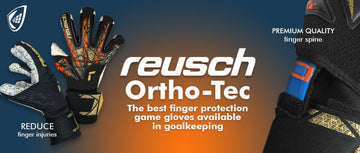
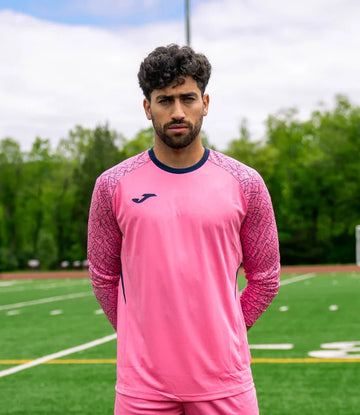
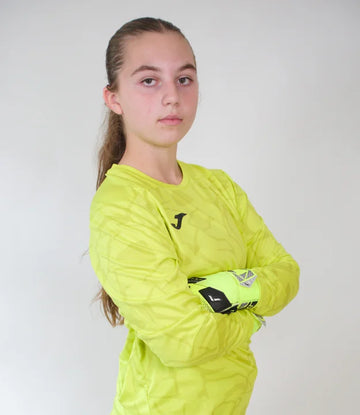
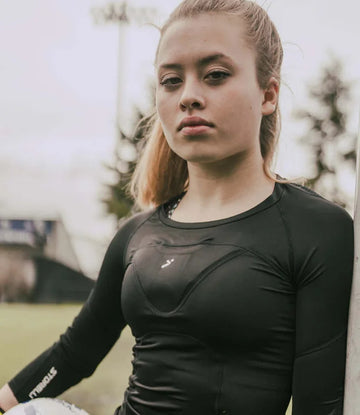
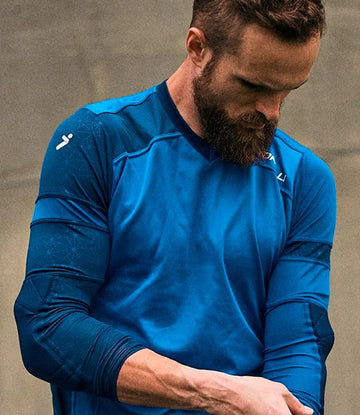
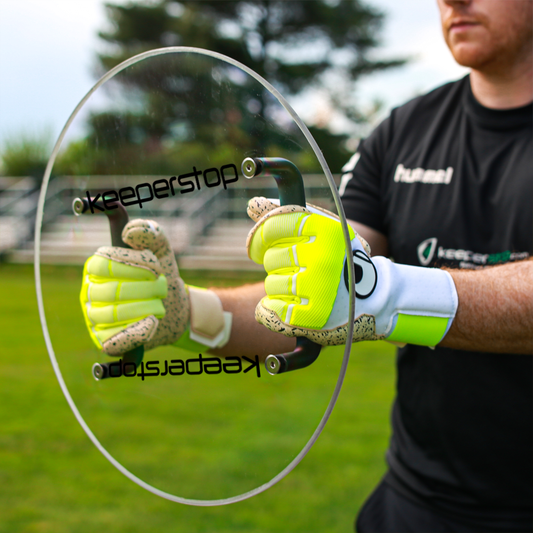
 Gloves
Gloves
 Jerseys
Jerseys
 Gear
Gear
 Brands
Brands
